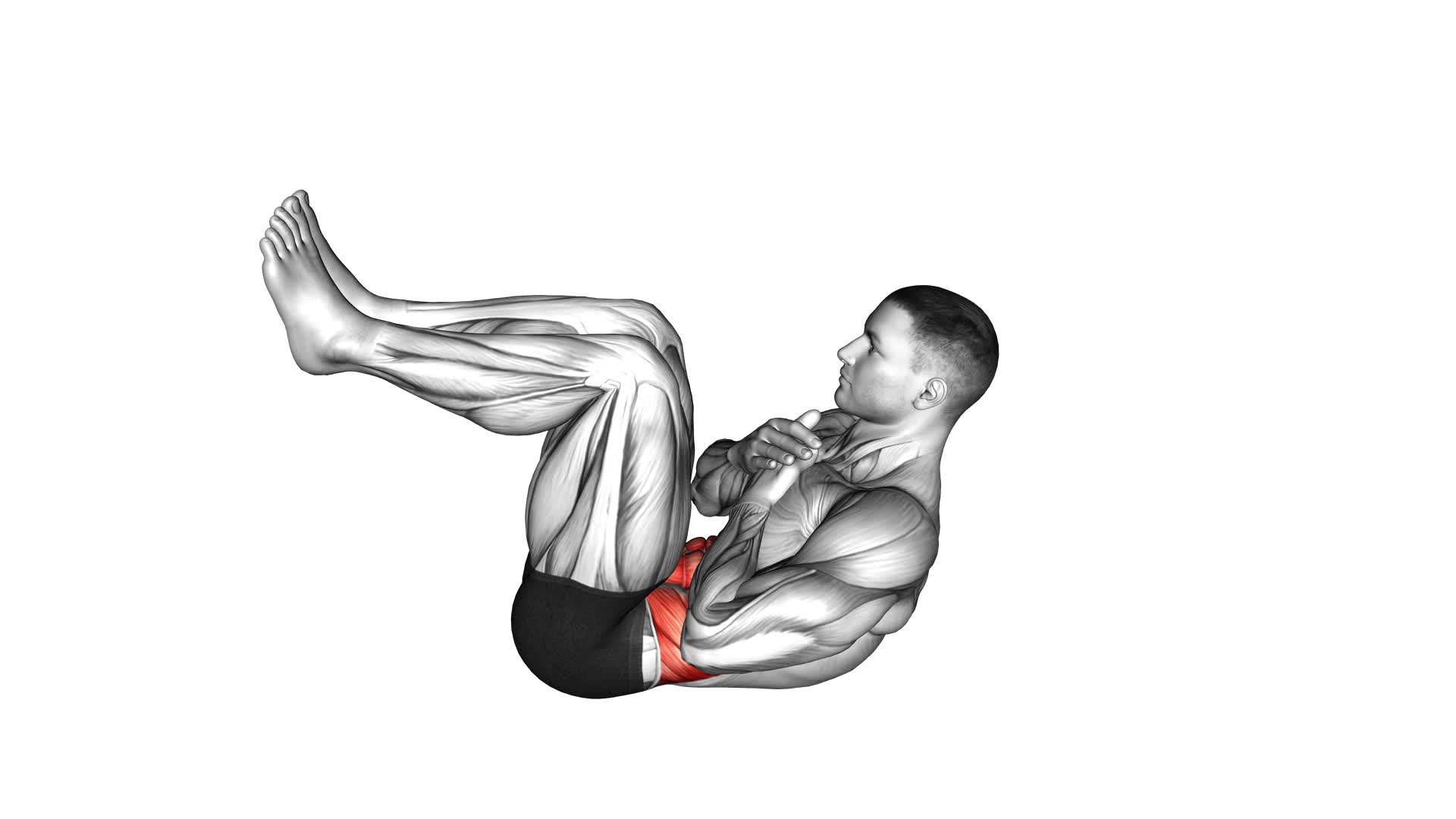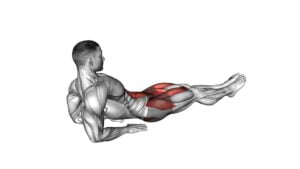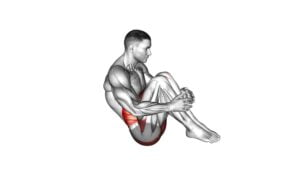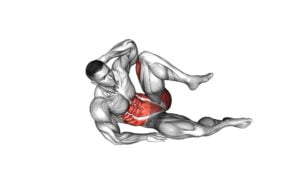Tuck Crunch – Video Exercise Guide & Tips

Looking to strengthen your core? The Tuck Crunch is a powerful exercise that targets your abs and obliques. In this video exercise guide, we'll show you the proper technique and common mistakes to avoid.
Watch This Exercise Video
Plus, we'll share advanced variations and tips for increasing intensity. Whether you're a beginner or advanced fitness enthusiast, you can easily incorporate Tuck Crunches into your routine.
Get ready to feel the burn and rock those abs!
Key Takeaways
- Tuck crunches target core muscles, including obliques and transverse abdominis.
- Proper technique involves lying on your back with knees bent, engaging your core, and lifting your head, neck, and shoulders off the ground while bringing your knees towards your chest.
- Common mistakes to avoid include not fully engaging core muscles, relying on momentum instead of using core muscles, and not maintaining proper form.
- Advanced variations of tuck crunches include weighted tuck crunches, decline tuck crunches, and alternating tuck crunches.
Benefits of Tuck Crunches
Discover the many benefits of tuck crunches for your core strength and abdominal muscles. Tuck crunches are a highly effective exercise that targets your core muscles, helping to strengthen and tone your abs. By incorporating different variations of tuck crunches into your workout routine, you can maximize the benefits and challenge your core in new ways.
One of the key benefits of tuck crunches is that they engage multiple muscle groups simultaneously. Not only do they work your rectus abdominis, the front layer of your abdominal muscles, but they also activate your obliques and transverse abdominis, which are responsible for stability and rotational movements.
Another advantage of tuck crunches is that they can improve your overall core strength. As you perform the exercise, you're required to stabilize your body and maintain control, which helps to strengthen the deep core muscles that support your spine. This can lead to improved posture and reduced risk of lower back pain.
Incorporating different variations of tuck crunches, such as bicycle crunches or reverse crunches, can further enhance the benefits for your core strength. These variations target different areas of your abs and provide a well-rounded workout for your core muscles.
Proper Technique for Tuck Crunches
To perform tuck crunches with proper technique, follow these steps to effectively engage your core muscles and maximize the benefits of this exercise:
- Lie on your back with your knees bent and feet flat on the floor, hip-width apart. Place your hands behind your head, elbows out to the sides.
- Engage your core by drawing your belly button towards your spine. This will help stabilize your spine throughout the movement.
- Exhale as you lift your head, neck, and shoulders off the ground, curling your upper body towards your knees. At the same time, bring your knees towards your chest, creating a 'tucked' position.
- Hold the contraction for a moment, focusing on squeezing your abs.
- Inhale as you slowly lower your upper body and legs back to the starting position, maintaining control throughout the movement.
- Repeat for the desired number of repetitions.
Modifications: If tuck crunches are too challenging, you can start by performing regular crunches to build core strength. As you progress, you can gradually increase the difficulty by extending your legs or holding a weight against your chest.
Common Mistakes to Avoid
One common mistake to avoid during tuck crunches is improper form. Maintaining proper form is crucial to get the most out of this exercise and prevent injury.
One common mistake isn't engaging the core muscles fully. To avoid this, focus on pulling your belly button towards your spine and squeezing your abs throughout the movement.
Another mistake is relying solely on momentum instead of using your core muscles to lift your legs. Slow and controlled movements are key to effectively target your abdominal muscles.
Beginners often find it challenging to perform tuck crunches, but there are modifications that can help. If you're struggling to lift both legs off the ground, you can start by lifting one leg at a time or bending your knees and bringing them towards your chest.
As you build strength and confidence, you can progress to lifting both legs simultaneously. Remember to listen to your body and start with modifications that suit your current fitness level.
Advanced Variations of Tuck Crunches
To challenge your core muscles even further, try incorporating advanced variations of tuck crunches into your workout routine. These variations add an extra level of difficulty and intensity to the exercise, helping you to strengthen your core and achieve your fitness goals.
Here are three advanced variations of tuck crunches that you can try:
- Weighted Tuck Crunches: Hold a dumbbell or a medicine ball against your chest while performing the tuck crunch. The added weight increases the resistance and forces your core muscles to work harder.
- Decline Tuck Crunches: Position yourself on a decline bench with your head lower than your feet. Perform the tuck crunch in this position to engage your core muscles from a different angle.
- Alternating Tuck Crunches: Instead of bringing both knees towards your chest at the same time, alternate between bringing one knee towards your chest while extending the other leg. This variation adds a rotational component, challenging your core muscles in a different way.
Incorporating these advanced variations of tuck crunches into your routine will help you take your core strength to the next level and achieve greater results. Remember to perform each variation with proper form and gradually increase the difficulty as you become stronger.
Tips for Increasing Intensity
To increase the intensity of your tuck crunches, it's important to focus on proper form techniques such as:
- Engaging your core
- Maintaining a controlled movement throughout the exercise
Gradually increase the weight or resistance you use during your tuck crunches to challenge your muscles and promote growth.
Another effective way to increase intensity is by incorporating high intensity interval training (HIIT) into your workout routine. This involves alternating between periods of intense tuck crunches and periods of rest or lower intensity exercises.
Proper Form Techniques
To increase the intensity of your tuck crunches, try incorporating these proper form techniques:
- Core Engagement: Focus on contracting your abdominal muscles throughout the entire movement. This will help to strengthen your core and maximize the effectiveness of the exercise.
- Breathing Techniques: Pay attention to your breathing while performing tuck crunches. Exhale as you crunch up and contract your abs, and inhale as you release back down. This rhythmic breathing pattern can help to enhance your mind-muscle connection and improve your overall performance.
- Controlled Movements: Slow down the tempo of your tuck crunches and focus on maintaining control throughout the entire range of motion. This will engage your muscles more effectively and prevent any momentum or swinging that could reduce the intensity of the exercise.
Gradual Weight Increment
Increase the intensity of your tuck crunches by gradually adding more weight to challenge your core muscles. Weight progression is an effective way to enhance muscle engagement and maximize the benefits of this exercise.
Start by using a light dumbbell or medicine ball, holding it close to your chest as you perform the tuck crunch. As you become stronger and more comfortable, gradually increase the weight by a pound or two. This gradual progression will allow your muscles to adapt and grow stronger over time.
Remember to maintain proper form and engage your core throughout the exercise. With consistent practice and gradual weight increment, you'll see improvements in your core strength and overall fitness level.
Keep challenging yourself to achieve your fitness goals.
High Intensity Interval Training
As you progress from gradually increasing the weight in your tuck crunches, you can further enhance the intensity of your workout through high intensity interval training (HIIT). HIIT is a training technique that involves alternating between periods of high-intensity exercise and short recovery periods. It's a great way to maximize your calorie burn and improve cardiovascular fitness.
Here are three advanced modifications to incorporate into your HIIT workout routines:
- Increase the intensity: Push yourself to work at your maximum effort during the high-intensity intervals. This could mean increasing the speed, resistance, or incline of your exercises.
- Decrease the recovery time: Shorten the duration of your recovery periods between intervals. This will keep your heart rate elevated and challenge your body to adapt to shorter rest periods.
- Add plyometric exercises: Incorporate explosive movements, such as jumping lunges or burpees, into your HIIT routine. These exercises engage multiple muscle groups and elevate your heart rate even more.
Incorporating Tuck Crunches Into Your Routine
How can you effectively include tuck crunches in your workout routine?
Tuck crunches are a great exercise for engaging your abs and strengthening your core. To incorporate tuck crunches into your routine, start by lying flat on your back with your knees bent and feet flat on the ground. Place your hands behind your head or crossed over your chest. As you exhale, lift your shoulders off the ground and tuck your knees towards your chest, bringing them as close as possible. Hold this position for a second and then slowly lower back down to the starting position. Aim for three sets of 10 to 15 repetitions.
If you're looking for alternatives to tuck crunches, there are several exercises that target the same muscle groups. Plank exercises, such as the forearm plank or side plank, are great for strengthening your core and engaging your abs. Russian twists, bicycle crunches, and leg raises are also effective exercises for targeting your abdominal muscles.
Remember to always listen to your body and start with exercises that feel comfortable and challenging for you. As you progress, you can gradually increase the intensity and difficulty of your workouts. Incorporating tuck crunches or other ab exercises into your routine will help you build a strong and toned core.
Frequently Asked Questions
How Many Calories Can I Burn by Doing Tuck Crunches?
You can burn calories by doing tuck crunches. The number of calories burned depends on factors like your body weight, intensity, and duration of the exercise.
Tuck crunches are a variation of the traditional crunch exercise, where you bring your knees towards your chest while performing the crunch. This engages your abdominal muscles and helps strengthen your core.
Adding tuck crunches to your workout routine can contribute to calorie burn and overall fitness.
Can Tuck Crunches Help Reduce Belly Fat?
Tuck crunches can definitely help reduce belly fat. They're highly effective for overall abdominal strength and can be incorporated into a comprehensive workout routine for maximum fat burning potential.
By engaging your core and targeting the abdominal muscles, tuck crunches contribute to toning and tightening your midsection.
When combined with a balanced diet and regular exercise, tuck crunches can play a significant role in reducing belly fat and achieving a more toned and defined stomach.
Are There Any Modifications or Alternatives for People With Lower Back Pain?
If you're dealing with lower back pain, there are modifications and alternatives you can try. It's important to find exercises that can help relieve and manage your lower back pain.
Look for exercises that focus on strengthening your core and improving flexibility. Incorporating exercises like bird dog, bridge, and cat-camel stretch can be beneficial.
Remember to consult with a healthcare professional or a certified trainer to ensure you're doing the exercises correctly and safely.
How Often Should I Do Tuck Crunches to See Results?
To see results from tuck crunches, it's important to be consistent with your workouts. Doing them 2-3 times a week is a good starting point. However, keep in mind that individual results may vary.
It's also essential to perform the exercise correctly and avoid common mistakes such as pulling on your neck or using momentum. Remember to engage your core and focus on controlled movements for optimal results.
Can Tuck Crunches Be Done by People With Limited Flexibility?
Tuck crunches are a great exercise for beginners looking to improve their core strength. They can be done by people with limited flexibility, as they target the abdominal muscles without putting too much strain on the back.
Tuck crunches provide numerous benefits, such as strengthening the core, improving posture, and increasing overall stability. By incorporating tuck crunches into your workout routine, you can gradually improve your flexibility and build a stronger core.
Conclusion
Incorporating tuck crunches into your exercise routine can provide numerous benefits, such as strengthening your core muscles and improving your overall stability. By following proper technique and avoiding common mistakes, you can maximize the effectiveness of this exercise.
For those looking for a challenge, advanced variations can be used to increase intensity. Whether you're a beginner or advanced fitness enthusiast, tuck crunches can be a valuable addition to your workout routine.

Author
Years ago, the spark of my life’s passion ignited in my mind the moment I stepped into the local gym for the first time. The inaugural bead of perspiration, the initial endeavor, the very first surge of endorphins, and a sense of pride that washed over me post-workout marked the beginning of my deep-seated interest in strength sports, fitness, and sports nutrition. This very curiosity blossomed rapidly into a profound fascination, propelling me to earn a Master’s degree in Physical Education from the Academy of Physical Education in Krakow, followed by a Sports Manager diploma from the Jagiellonian University. My journey of growth led me to gain more specialized qualifications, such as being a certified personal trainer with a focus on sports dietetics, a lifeguard, and an instructor for wellness and corrective gymnastics. Theoretical knowledge paired seamlessly with practical experience, reinforcing my belief that the transformation of individuals under my guidance was also a reflection of my personal growth. This belief holds true even today. Each day, I strive to push the boundaries and explore new realms. These realms gently elevate me to greater heights. The unique combination of passion for my field and the continuous quest for growth fuels my drive to break new ground.







